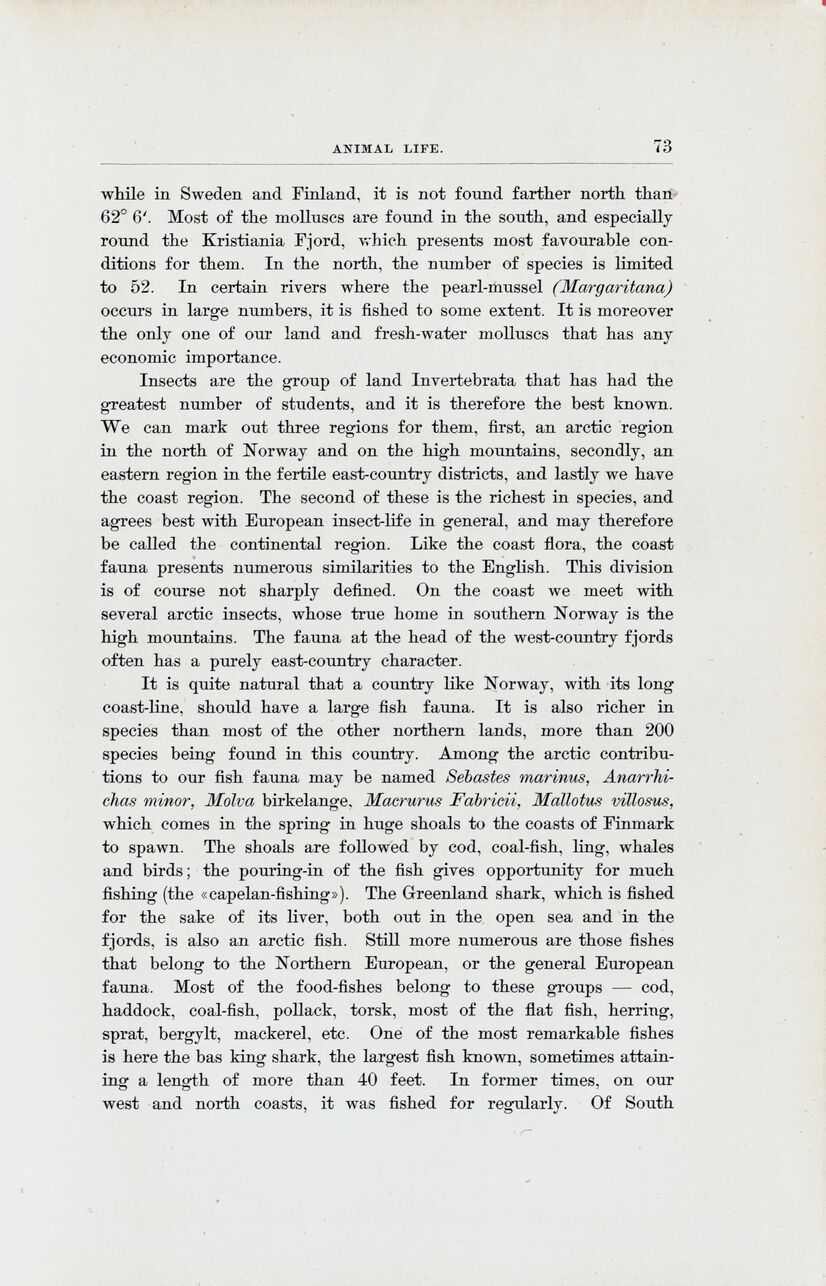
Full resolution (JPEG) - On this page / på denna sida - Animal Life, by James A. Grieg

<< prev. page << föreg. sida << >> nästa sida >> next page >>
Below is the raw OCR text
from the above scanned image.
Do you see an error? Proofread the page now!
Här nedan syns maskintolkade texten från faksimilbilden ovan.
Ser du något fel? Korrekturläs sidan nu!
This page has been proofread at least once.
(diff)
(history)
Denna sida har korrekturlästs minst en gång.
(skillnad)
(historik)
while in Sweden and Finland, it is not found farther north than
62° 6′. Most of the molluscs are found in the south, and especially
round the Kristiania Fjord, which presents most favourable
conditions for them. In the north, the number of species is limited
to 52. In certain rivers where the pearl-mussel (Margaritana)
occurs in large numbers, it is fished to some extent. It is moreover
the only one of our land and fresh-water molluscs that has any
economic importance.
Insects are the group of land Invertebrata that has had the
greatest number of students, and it is therefore the best known.
We can mark out three regions for them, first, an arctic region
in the north of Norway and on the high mountains, secondly, an
eastern region in the fertile east-country districts, and lastly we have
the coast region. The second of these is the richest in species, and
agrees best with European insect-life in general, and may therefore
be called the continental region. Like the coast flora, the coast
fauna presents numerous similarities to the English. This division
is of course not sharply defined. On the coast we meet with
several arctic insects, whose true home in southern Norway is the
high mountains. The fauna at the head of the west-country fjords
often has a purely east-country character.
It is quite natural that a country like Norway, with its long
coast-line, should have a large fish fauna. It is also richer in
species than most of the other northern lands, more than 200
species being found in this country. Among the arctic
contributions to our fish fauna may be named Sebastes marinus,
Anarrhichas minor, Molva birkelange, Macrurus Fabricii. Mallotus villosus,
which comes in the spring in huge shoals to the coasts of Finmark
to spawn. The shoals are followed by cod, coal-fish, ling, whales
and birds; the pouring-in of the fish gives opportunity for much
fishing (the «capelan-fishing»). The Greenland shark, which is fished
for the sake of its liver, both out in the open sea and in the
fjords, is also an arctic fish. Still more numerous are those fishes
that belong to the Northern European, or the general European
fauna. Most of the food-fishes belong to these groups — cod,
haddock, coal-fish, pollack, torsk, most of the flat fish, herring,
sprat, bergylt, mackerel, etc. One of the most remarkable fishes
is here the bas king shark, the largest fish known, sometimes
attaining a length of more than 40 feet. In former times, on our
west and north coasts, it was fished for regularly. Of South
o *
<< prev. page << föreg. sida << >> nästa sida >> next page >>